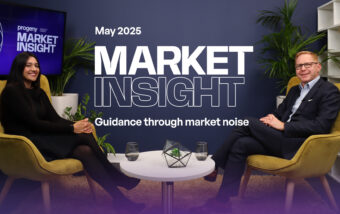Investors across the UK are finally finding out the true cost of their investments – and many will be very surprised. MiFiD II, a new pan-European set of regulations, covers virtually all aspects of trading, but its main focus for improving consumer confidence is on pricing transparency. With annual reports sent out in April, investment providers must disclose all related costs to their clients. This enhanced clarity, as well as regular client reporting and disclosures of conflicts, will finally enable investors to make meaningful comparisons across the market. They will be able to find out if their current investment manager is providing value for money, and the real cost of managing an investment portfolio. We think some investors might be in for a shock…
Transparent Reporting
Investors appoint professionals because they expect a higher investment return than they would generate if they tried to manage their portfolios themselves. Asset management is a value service and, to this end, clients are willing to pay a fee. However, the old and outdated ways of big industry players have always made it difficult for investors to calculate how much they were truly paying, because investment managers and stockbrokers could hide behind multiple layers of hidden costs.
Under the new directive, all firms must present ‘unbundled’ fees – so that an investor is able to assess everything they are paying for at all levels. These fees can include fund charges, custody costs, dealing commissions and administration costs, as well as platform costs and exit charges. It also includes analyst charges for research into stock values which banks typically produce in volumes and has come under increasing scrutiny.
Dealing commissions, incurred when your investment manager buys or sells a stock, have also often been unclear, unless you read every contract note! These build up, especially if changes are made frequently to the portfolio. More active trading incurs higher costs and can diminish investor returns, which many clients have previously been unaware of. For that reason, Progeny Asset Management does not charge any dealing commission on transactions. These costs also include those from buying and selling underlying assets in an investment product, like an OEIC or an investment trust.
Collectively hidden costs have benefited brokers and reduced the returns that an investor should be able generate. Under the new rules for pricing legislation, investors should be informed about what they are paying for from the outset and be able to carefully monitor ongoing and additional costs to ensure that they are receiving good value and that their returns are not being eaten up by inbuilt costs.
Benchmarking
In addition to the ‘unbundling’ of costs, firms must be able to give customers an itemised breakdown of pricing upon request. This price information and benchmarking is likely to reduce the number of products on the market and put a greater focus on model portfolios and alignment of product.
Across the industry, margins are likely to be put under pressure as firms seek to reduce costs that have come to light whilst simultaneously improving their services. The number of distributors is falling and more scrutiny by providers as to how and by whom their products are distributed and how they communicate with distributors and end investors is growing. New platforms and technology are opening up distribution and advice models, which puts more pressure on firms to further their business operations.
Progeny Asset Management now offers a Portfolio Review Service that provides an evaluation of the investment strategy and performance of a client’s current investments after costs and how this compares to the industry generally.
Our Portfolio Review Service enables you to obtain a fully independent analysis, including:
Asset Allocation
Asset allocation is based on the understanding that different types of assets do not move together and some are more volatile than others. We will measure your portfolio against a risk-aligned target asset allocation.
Risk Assessment
Risk assessment is the maximum expected portfolio return for a given amount of portfolio risk. We will undertake an overall portfolio risk assessment using our proprietary risk scoring tool, based on the Morningstar and Dynamic Planner risk outputs, to show whether your portfolio matches your parameters.
Stock & Fund Assessment
Stock performance will be undertaken using quantitative ratio analysis to give insight into the liquidity, operational efficiency and profitability of stocks. Fund Assessment will be undertaken using a combination of risk adjusted returns and quantitative performance to show the strength of performance trends.
Total Return
We will conduct a performance assessment against the appropriate ARC benchmark, a recognised industry benchmark based on actual client performance data, to show the actual returns that a private client should expect for a given risk appetite.
Costs
We will prepare a fully compliant cost analysis including: Investment Service Charges, Transaction Costs (Trading Commission, Stamp Duty, PTM Levy), Ongoing Management Fees, Performance Fees, Product ‘Transaction’ Costs, and Ongoing Charges.
We offer this service both directly to individual investors and to intermediaries such as financial planners and wealth managers. To request your portfolio review today, please click here.
If you require more guidance with investment decisions or wish to place the management of your portfolio in expert hands, please call us on 0344 225 0660 or click here and we will discuss with you the suitability of our services and products.
We use a recognised industry benchmark based on actual client performance data. The ARC Private Client Indices (PCI) provides an objective means of placing investment performance into context and ARC PCI is a barometer for the state of the private client investment management industry.
Investments and the income paid on them can fall as well as rise in value; therefore, your capital is always at risk. Past performance and forecasts are not reliable indicators of future results and performance.









